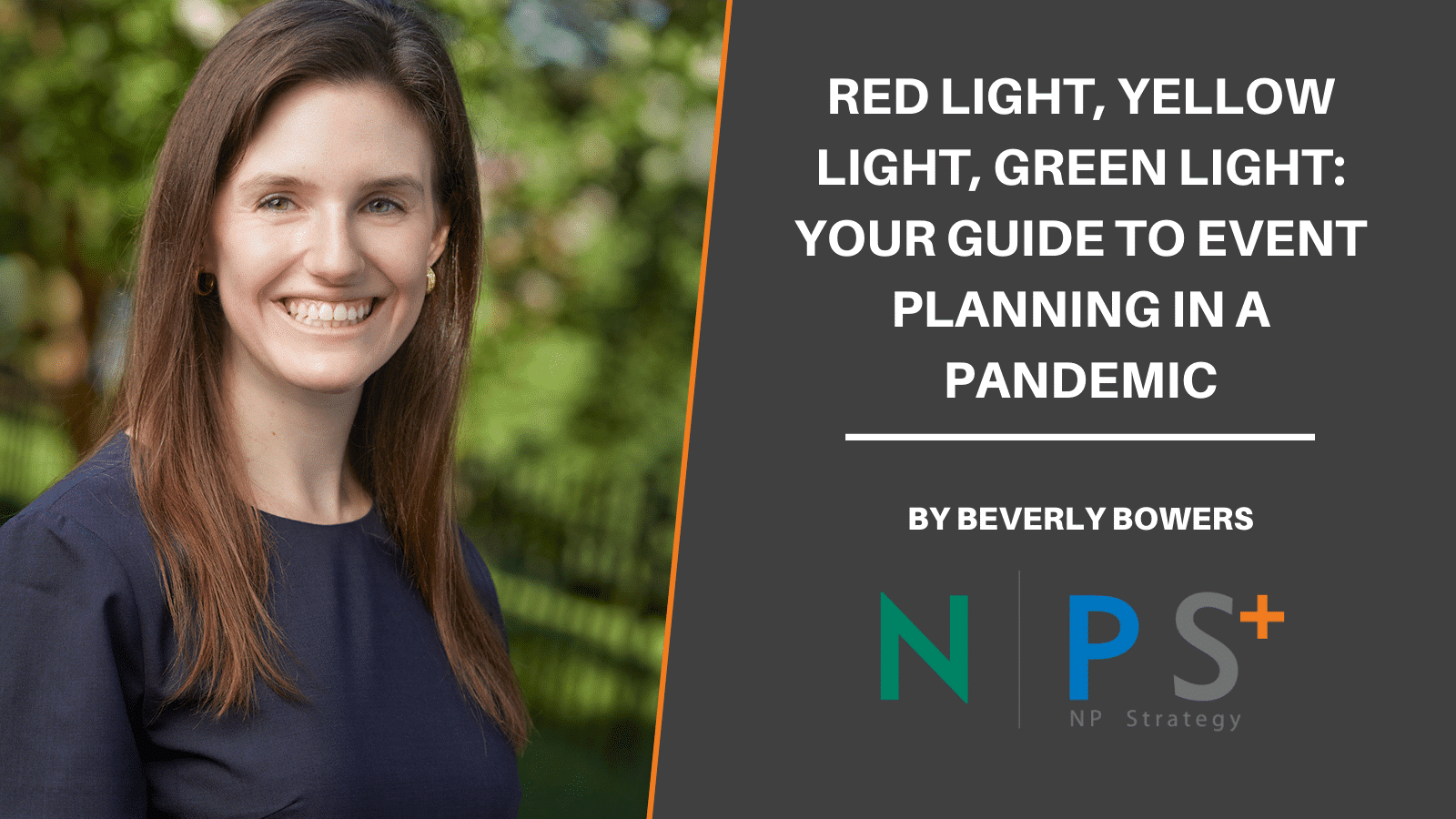
As the classic playground game goes: red light means stop, yellow light means maybe and green light means GO. What does the playground game mean when you are planning an event in 2022? It means events are back in person and while that may seem like a green light, you must also plan for those red and yellow light moments.
At NP Strategy we take a strategic approach to planning and executing an event. Whether the event is on a small scale or 500 attendees, we assist in the development of a budget, schedule, attendee list, reservations, event branding, videography and more.
NPS recently assisted a client whose brand is well known in part because of the highly coveted invitation they send out for their annual conference. Due to COVID, a conference had not been held since2019. The client wanted the first in person event to be bigger and better than ever before, while still acknowledging that technically the pandemic was still occurring. Here are three things we did to strategically plan for the event:
1)Created paperless options. Instead of attendees grabbing itineraries and conference materials, a QR code was placed on the back of each name tag. This allowed attendees to simply scan the code and see what was up next, who the speaker was, and the location of each event. The QR-codes were also placed on signs throughout the resort so that it was easy to access.
2)Utilized color-coded stickers. At check in, each attendee was asked a simple but fun question: do you want a green sticker, which meant you are comfortable with “hugs and handshakes,” a yellow sticker, which meant you prefer an “elbow bump,” or a red sticker, which meant “no touching and I would prefer you stay back.” People quickly took to our red light, green light sticker system and placed the sticker on their nametags that best represented how they felt. This was the perfect way to avoid awkwardness during networking events and opened up time for conversation.
3)Provided free access to COVID tests. If an attendee started to feel ill or simply wanted to be on the safe side before returning home, rapid tests were provided at no cost. This reassured guests that were mingling and sitting next to others that everyone was healthy and ready to participate in the events.
Post-COVID life will continue to evolve and change as we move further away from 2020. It is crucial that as we adjust, we are strategic in our planning so that events are well attended and more successful than ever before.
